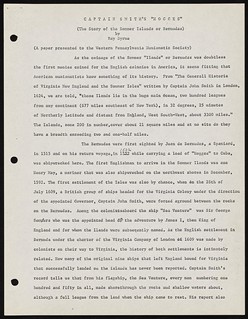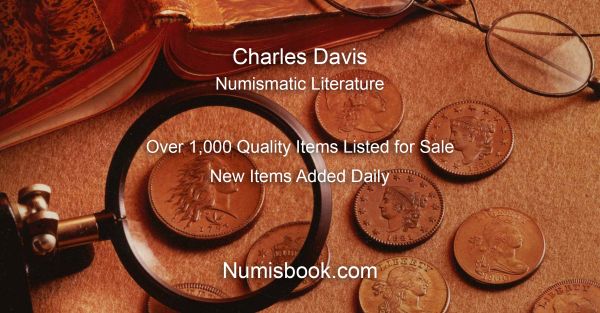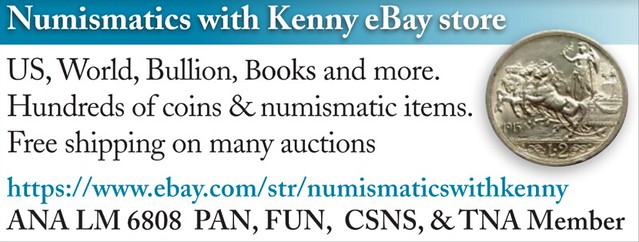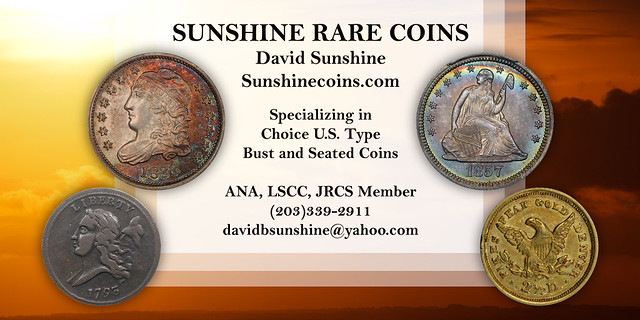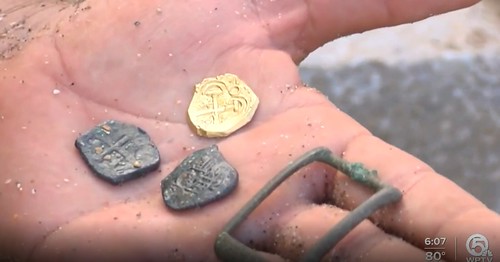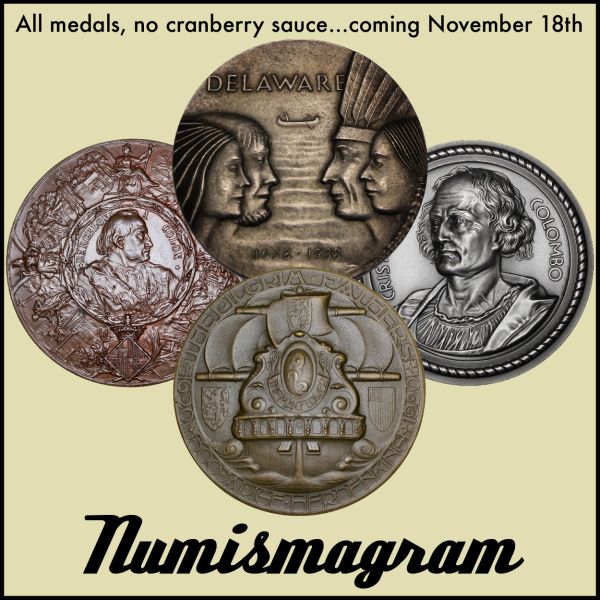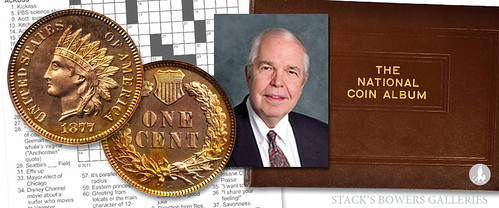
Visit our NBS Sponsors


About UsThe Numismatic Bibliomania Society is a non-profit association devoted to the study and enjoyment of numismatic literature. For more information please see our web site at coinbooks.org SubscriptionsThose wishing to become new E-Sylum subscribers (or wishing to Unsubscribe) can go to the following web page link MembershipThere is a membership application available on the web site Membership Application To join, print the application and return it with your check to the address printed on the application. Print/Digital membership is $40 to addresses in the U.S., and $60 elsewhere. A digital-only membership is available for $25. For those without web access, write to: Charles Heck, Treasurer AsylumFor Asylum mailing address changes and other membership questions, contact Chuck at this email address: treasurer@coinbooks.org SubmissionsTo submit items for publication in The E-Sylum, write to the Editor at this address: whomren@gmail.com BUY THE BOOK BEFORE THE COINSale CalendarWatch here for updates! |
- WAYNE'S WORDS: THE E-SYLUM NOVEMBER 13, 2022
- KOLBE & FANNING AUCTION SALE 165 ANNOUNCED
- ALFRED EDWARD JOHNBRIER (1935-2022)
- EDWARD KUSZMAR (1941-2022)
- WPNS PAPERS ON THE NEWMAN PORTAL
- VIDEO: ANTHONY SWIATEK INTERVIEW
- CSNS PARTNERS WITH NEWMAN NUMISMATIC PORTAL
- APPLYING HAMILTON'S 1791 MINT REPORT
- HERMON MACNEIL PLASTERS ON THE MOVE
- READER COIN DEAL STORIES
- VETERAN'S DAY COIN STORY
- NOTES FROM E-SYLUM READERS: NOVEMBER 13, 2022
- THE STUART GWYNN BANKNOTE PAPER DISASTER
- ROOSEVELT OMITS "IN GOD WE TRUST"
- VOCABULARY TERM: MEDAL
- HENRY WITTER BECKWITH (1869-1958)
- HETTY GREEN, VALUE INVESTOR
- DAN O'DOWD TAKES ON TESLA
- FEIGENBAUM TO BE PNG EXECUTIVE DIRECTOR
- RAISING THE BAR ON HOBBY ETHICS
- MARIA THERESA'S SILVER COIN CABINET
- SEDWICK TREASURE AUCTION 32 RESULTS
- NUMISMATIC NUGGETS: NOVEMBER 13, 2022
- COINS AND STATUES FOUND IN ITALY MUD
- ROMAN GOLD COIN FOUND IN WHETSTONE
- COIN MAY BE OLDEST FOUND IN CANADA
- HURRICANE NICOLE SURFACES ARTIFACTS
- CHARLES BARBER'S FERRACUTE PATTERNS
- RARE SYDNEY COVE MEDALLION OFFERED
- ALTERED HAWAII SILVER CERTIFICATES
- LOOSE CHANGE: NOVEMBER 13, 2022
Click here to read the thin version on the web
Click here to subscribe
Click here to access the complete archive
To comment or submit articles, reply to whomren@gmail.com
Content presented in The E-Sylum is not necessarily researched or independently fact-checked, and views expressed do not necessarily represent those of the Numismatic Bibliomania Society.
WAYNE'S WORDS: THE E-SYLUM NOVEMBER 13, 2022
 New subscribers this week include:
Kimberly Dumas.
Welcome aboard!
New subscribers this week include:
Kimberly Dumas.
Welcome aboard!
Thank you for reading The E-Sylum. If you enjoy it, please send me the email addresses of friends you think may enjoy it as well and I'll send them a subscription. Contact me at whomren@gmail.com anytime regarding your subscription, or questions, comments or suggestions about our content.
This week we open with a numismatic literature sale, (sadly) two obituaries, updates from the Newman Numismatic Portal, Hamilton's 1791 Mint Report, and more.
Other topics this week include Anthony Swiatek, Hermon MacNeil, Stuart Gwynn, Teddy Roosevelt, Henry Beckwith, Hetty Green, Dan O'Dowd, John Feigenbaum, Maria Theresa, auction results, coin finds, Ferracute patterns, the Sydney Cove medallion, and altered Hawaii silver certificates.
To learn more about Al Johnbrier and Ed Kuszmar, the Western Pennsylvania Numismatic Society, the 2023 NNP Symposium, coin deal stories, Bridge Toll Tokens, "In God We Trust", Ingle System tokens, and Florida beach coin finds, read on. Have a great week, everyone!
Wayne Homren
Editor, The E-Sylum
KOLBE & FANNING AUCTION SALE 165 ANNOUNCED
Kolbe & Fanning have announced their next numismatic literature sale. Some fabulous material. See an article elsewhere in this issue for more information on one of the lots. -Editor
 Kolbe & Fanning December 3 Sale
Kolbe & Fanning December 3 Sale
Kolbe & Fanning Numismatic Booksellers are happy to announce that we will be holding our next auction sale on Saturday, December 3, 2022. The sale includes a wide variety of rare and out-of-print works on coins, medals, and paper money from antiquity to the present, including material from over two dozen consignors.
Some highlights of the sale include:
ALFRED EDWARD JOHNBRIER (1935-2022)
Coin dealer Al Johnbrier of Bowie, MD has passed away. -Editor
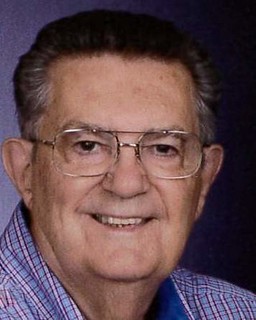 Alfred Edward Johnbrier "Al", 87, of Bowie, MD, passed away on November 8, 2022. Born July 30, 1935, in Pittsburgh, PA, he was the son of Edward William Johnbrier and Mary Ann Fritch Johnbrier.
Alfred Edward Johnbrier "Al", 87, of Bowie, MD, passed away on November 8, 2022. Born July 30, 1935, in Pittsburgh, PA, he was the son of Edward William Johnbrier and Mary Ann Fritch Johnbrier.
Al dropped out of school in the 10th grade to work to support his mother and sister and then joined the USAF. He spent 23 years working with logistics and was stationed in Landsberg, Germany; Fairbanks, Alaska; Charleston, South Carolina; Bangkok, Thailand; McGuire AFB, New Jersey; Air Force One at Andrews AFB, Maryland; OSI, Washington, DC.
He met Joann Youngfleisch in 1960 at a dance at Westview Park in Pittsburgh and they were married on June 2, 1962.
EDWARD KUSZMAR (1941-2022)
I also learned that dealer and show promoter Ed Kuszmar passed away. There's little information online yet, but here are some notes from readers. Ed was a pioneering coin show promoter who started the Baltimore shows now run by Whitman. Whitman Expos General Manager Lori H. Kraft had been in constant communication, and confirmed his passing. -Editor
Kuszmar, Edward Ed"
Promoter (b. 11/29/1941 d. 11/7/2022)
Employed with Control Data. Employed with Plainfield Coins of Boca Raton in 1973. Opened his own shop in 1977.
Promoter with Gordon Berg of the Baltimore Coin and Currency shows.
WPNS PAPERS ON THE NEWMAN PORTAL
The latest addition to the Newman Numismatic Portal is a group of papers published by the Western Pennsylvania Numismatic Society. Project Coordinator Len Augsburger provided the following report. -Editor
VIDEO: ANTHONY SWIATEK INTERVIEW
The David Lisot Video Library on the Newman Numismatic Portal can be found at:
https://nnp.wustl.edu/library/multimediadetail/522852
We highlight one of his videos each week in The E-Sylum. Here's one from 1986 where David interviews author and dealer Anthony Swiatek. -Editor
CSNS PARTNERS WITH NEWMAN NUMISMATIC PORTAL
The Central States Numismatic Society and the Newman Numismatic Portal are partnering for a three-day symposium at the 2023 CSNS convention. Here's the press release, which includes additional information about the show. -Editor
As part of an ongoing expansion and modernization program for its annual convention, leaders of the Central States Numismatic Society (CSNS.org) are partnering with Washington University's Newman Numismatic Portal (NNP) for a three-day symposium at the 2023 CSNS convention. The NNP Symposium sessions will also be live-streamed and archived for free access at the NNP website, nnp.wustl.edu.
APPLYING HAMILTON'S 1791 MINT REPORT
Len Augsburger passed along an article by Eric Brothers in the Fall 2022 Financial History Magazine from the Museum of American Finance titled "Applying Hamilton's Mint Report to American Finance and Commerce." Thanks. Here's an excerpt. -Editor
Alexander Hamilton's 1791 Report on
the Establishment of a Mint
(hereafter, the Report
) is an iconic financial
document in which the first Secretary of
the Treasury carefully plotted the future
money of the United States. However,
when Congress considered the Report and
enacted the Coinage Act of 1792, important elements were excluded.
HERMON MACNEIL PLASTERS ON THE MOVE
Jim Haas recently published a new book on the life of sculptor Hermon Atkins MacNeil, the creator of the Standing Liberty Quarter and other numismatic products. Tomorrow he's becoming part of numismatic history himself, helping transport fifteen plasters of MacNeil's works to a new home. Here's his report. -Editor
Following MacNeil's death in October 1947, his widow Ceil Muench MacNeil donated at least eighteen plasters to the Swope museum in Terre Haute.
In a call to the curator earlier this year I learned that the space where they had been stored for more than fifty years, was going to be repurposed come spring, and the plasters de-accessed.
They had been offered to College Point's Poppenhusen Institute a decade ago, but there was never any money in the budget to have them packed and shipped to the town where MacNeil had had his studio for almost fifty years. He served on the Institute's Board of Control for thirty of those years and over the course of time, it had acquired four of his works, one of which I donated and another that he had given to the public school I attended from 1948 to 1956. Before I ever knew who he was, I had seen the model of his group Pere Marquette frequently from first through eighth grades. Another work in its collection is one by Carol Brooks MacNeil and his nine-foot model of Portland's Coming of the White Man.
READER COIN DEAL STORIES
Last week I asked if readers had stories about trades or sales that went particularly well or badly. Jud Petrie shared several. -Editor
1) While attending college in upstate New York I would often go to flea markets, auctions and yard sales. At one flea market a dealer had a cigar box full of Indian Head Cents, mostly 1900-1909, and mostly in VF-XF condition and selling them for the outrageous price (at the time) for $5 each. Going through them I found a 1877 VF+. I held it up and asked "You want $5 for this?" He responded "That's my price, I don't dicker, take it or leave it." Well, I took it! Anytime someone wants to sell me a $1000 coin for $5 I will buy it. I diligently went through about 800 coins looking for S mint marks and other key coins without any success. When asked if I told him it's value I respond with 'Hell no! Let him suffer in ignorance. I paid his price'.
2) Also in the same time frame (1969-1970) I would attend a weekly estate auction where I would buy coins. The night watchman at the auction house approached me and said that he noticed me buying coins and he had some that he wanted to sell. He also didn't dicker, his price was his price, and that was determined to be 50% of the Good price listed in the 1958 Blue Book. Almost all of my Large Cent collection came from him. The only drawback was that I was a struggling college student without access to the funds I would have liked to have.
 3) Many years later I attended a coin auction not far from home. Amongst the lots were a number of rolls of Lincoln Cents. I opened one roll of 1911 cents, almost all of them were XF-AU. I got it for $10. Apparently I was the only one to examine the contents.
3) Many years later I attended a coin auction not far from home. Amongst the lots were a number of rolls of Lincoln Cents. I opened one roll of 1911 cents, almost all of them were XF-AU. I got it for $10. Apparently I was the only one to examine the contents.
4) About 10 years ago I worked part time for a local auction house that often had coins in their estate sales. I was the underbidder on many coins against a local collector with deep pockets. Luckily for me he didn't collect Canadian coins. I bought a lot for $200 that contained 3 1926 Far 6 nickels, many Newfoundland coins, and over $800 melt value of silver coins.
5) Most recently at a local coin auction I bought a lot of Civil War era items. There were a number of Civil War Tokens, Seated Liberty coins, discharge papers for a soldier from Racine Wisconsin, and...a Sutler token! I got the lot for $175, sold the Sutler Token for $750, added the tokens to my collection and donated the discharge papers to the Racine Historical Society.
Knowledge is power! It also helps to be lucky"
THE BOOK BAZARRE
VETERAN'S DAY COIN STORY
Len Augsburger passed along this Veteran's Day weekend story from Sylvia Baer, a professor of literature at Rowan College of South Jersey. Thanks. -Editor
Numismatic Understandings
Wow, that's just overwhelming!
It was 1959 and my grandfather, Max Kuhner, was showing his coin collection to nine year-old me. Overwhelming? Sylvia I love how you gather new words and play with them,
he chuckled. Then he continued, Yes, I've been building this collection ever since I came to America in 1925. I researched and saved and started.
He had come from Germany and as a new immigrant had many challenges and hurdles to his career as an engineer, but he persevered and rose to great prominence in his field. Along with many patents, he was also a designer of water systems for California, dam projects in the mid-west, and he was on the Manhattan Project where he was involved in the development of atomic power and the atomic bomb. We found out about most of these accomplishments (in locked drawers and filed documents) after his death because he was sworn to secrecy for much of his career.
NOTES FROM E-SYLUM READERS: NOVEMBER 13, 2022
International Token Web Conference
Quentin Christensen writes:
 "The International Token Web Conference which has been held for the last three years, started during the original Covid-19 lockdowns. The latest was held earlier this year, online. All of the lectures were recorded and are available online for free at
https://tokenconference.numismatas.com/
"The International Token Web Conference which has been held for the last three years, started during the original Covid-19 lockdowns. The latest was held earlier this year, online. All of the lectures were recorded and are available online for free at
https://tokenconference.numismatas.com/
"Additionally, you can purchase hardcopy books of the proceedings with transcripts of each lecture and colour photos at: https://www.blurb.com/user/tokenconfer
"Lectures this year included:
- "Seven miles from Sydney and a Thousand Miles from Care: The Port Jackson and Manly Steamship Company tokens"
- "Tokens and Textile 1 - The Dutch Perspective"
- "Tokens and Textile 2 - The Indian Perspective"
- "Ferry Tokens of Marstrand, Sweden"
- "Erotic Exonumia"
- "19th Century Bridge Toll Tokens of Central New York State - Cohoes, Troy and Waterford"
Thanks for the report! All the pervs out there are ordering the erotic exonumia book right now. -Editor
To read the earlier E-Sylum article, see:
UPCOMING NUMISMATIC EVENTS: MAY 1, 2022 : International Token Web Conference
(https://www.coinbooks.org/v25/esylum_v25n18a17.html)
Other topics this week include new medals by Jeanne Stevens-Sollman, and the Carnegie Museum Coin Sales. -Editor
THE STUART GWYNN BANKNOTE PAPER DISASTER
Patrick Parkinson passed along this Online Book and Ephemera Fair item relating to U.S. currency. Thanks - great item. -Editor
Washington, DC, 1864
Autograph letter, signed, from O. Corvin to L.E. Chittenden, January 7, 1864. 3.5 pages in a neat hand on legal-sized lined paper, approximately 1,200 words in all. Folding creases, light soiling, a few short tears; very good.
ROOSEVELT OMITS "IN GOD WE TRUST"
Kavan Ratnatunga writes:
"I am going through an interesting collection of old newspapers put online in Singapore. I did not know of this statement by President Roosevelt."
Theodore Roosevelt championed new designs for U.S. coinage, most famously reaching out to sculptor Augustus Saint-Gaudens. The designs did not include the "In God We Trust" motto which first appeared on the two cent piece in 1864. The January 3, 1908 article published a letter from Roosevelt putting forth his reasoning on the matter. -Editor
VOCABULARY TERM: MEDAL
Here's another entry from Dick Johnson's Encyclopedia of Coin and Medal Terminology. A classic. How would YOU define "medal"? -Editor
Medal. A memorial piece, of historic, commemorative, or artistic design, made in any of various ways – basically cast or struck – originally in the shape similar to a coin (but without denomination and certainly not intended to pass for money). In general, the word medal includes all forms of medallic items (except plaques); but also has a specific, numismatic definition: A medal is a round, or nearly so, medallic item between one and approximately three inches (25–80mm) diameter.
HENRY WITTER BECKWITH (1869-1958)
American Numismatic Biographies author Pete Smith submitted this article on collector Henry Witter Beckwith. -Editor
When I compiled the recent listing of hundred-year-old numismatists, I left off the name of Dr. Henry Beckwith. I apologize, but there is a reasonable explanation.
HETTY GREEN, VALUE INVESTOR
Uber-collector Col. E.H.R. "Ned" Green was the son of Hetty Green, once the richest woman in America. Financial History Magazine from the Museum of American Finance has a cover article about her. Here's an excerpt. The illustration is from the July 26, 1905 issue of Puck magazine, where Hetty Green is depicted at the head of the table alongside other turn-of-the-century moguls and financiers including J. P. Morgan, Andrew Carnegie and John D. Rockefeller. -Editor
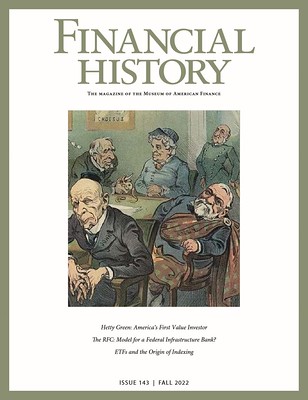 Value investing is a philosophy defined
by the discipline of purchasing assets only
when prices fall comfortably below fair
market value and selling them when prices
exceed fair market value. Ben Graham is
almost universally regarded as the founder
of value investing; however, before he was
born, a woman named Hetty Green also
used similar methods to tame the wild
markets of the Gilded Age. Further, Green
developed these principles instinctively at
an early age, enabling her to profit from
several market panics that ruined many of
her male contemporaries.
Value investing is a philosophy defined
by the discipline of purchasing assets only
when prices fall comfortably below fair
market value and selling them when prices
exceed fair market value. Ben Graham is
almost universally regarded as the founder
of value investing; however, before he was
born, a woman named Hetty Green also
used similar methods to tame the wild
markets of the Gilded Age. Further, Green
developed these principles instinctively at
an early age, enabling her to profit from
several market panics that ruined many of
her male contemporaries.
At the peak of her career, Green was the most creditworthy lender to America's most respected stock operators, corporations and even city governments. Her accomplishments are extraordinary by any standard, but what makes them even more impressive is that she succeeded despite lacking the advantages afforded to men at the time. She could not purchase a seat on the New York Stock Exchange, serve as a director on a corporate board or even exercise the right to vote.
DAN O'DOWD TAKES ON TESLA
Today the Washington Post published a profile of Dan O'Dowd, the billionaire owner of the blockbuster Tyrant coin collection recently exhibited at multiple conventions. It focuses on his campaign scrutinizing Tesla's "Self-Driving" technology, calling for regulation and testing. Is he today's Ralph Nader? -Editor
 When Dan O'Dowd had his midlife crisis, he bought two near-identical Tesla Roadsters, the first model the electric carmaker ever produced. This year, the 66 year-old tech entrepreneur added another to his collection: a Model 3 equipped with Full Self-Driving Beta — a software program that allows the car to drive on its own on highways and busy city streets.
When Dan O'Dowd had his midlife crisis, he bought two near-identical Tesla Roadsters, the first model the electric carmaker ever produced. This year, the 66 year-old tech entrepreneur added another to his collection: a Model 3 equipped with Full Self-Driving Beta — a software program that allows the car to drive on its own on highways and busy city streets.
The third Tesla is crucial for an unusual hobby: O'Dowd is waging a multimillion-dollar campaign to get Tesla's Full Self-Driving software off the roads — before Tesla CEO Elon Musk follows through with plans to make the tech available worldwide by the end of the year.
O'Dowd, who made his fortune selling software to military customers, has been using the Model 3 to test and film the self-driving software. He's documented what appear to be examples of the car swerving across the centerline toward oncoming traffic, failing to slow down in a school zone and missing stop signs. This summer, he triggered an uproar by releasing a video showing his Tesla — allegedly in Full Self-Driving mode — mowing down child-size mannequins.
FEIGENBAUM TO BE PNG EXECUTIVE DIRECTOR
John Feigenbaum has been selected by the Professional Numismatists Guild to become the organization's next Executive Director. Here's the press release. -Editor
 Business executive and lifelong
numismatist John Feigenbaum has been selected by the
Professional Numismatists Guild Board of Directors to become the non-profit organization's
next Executive Director. He will begin a transition period in January with PNG's long-time Executive Director Robert Brueggeman who will be retiring in 2023 after 28 years.
Business executive and lifelong
numismatist John Feigenbaum has been selected by the
Professional Numismatists Guild Board of Directors to become the non-profit organization's
next Executive Director. He will begin a transition period in January with PNG's long-time Executive Director Robert Brueggeman who will be retiring in 2023 after 28 years.
Brueggeman, 78, has been the organization's appointed leader since 1995 and is credited with creating and implementing many projects to enhance the hobby and profession of numismatics, as well as increase consumer and investor education and protection in the marketplace.
THE BOOK BAZARRE
RAISING THE BAR ON HOBBY ETHICS
I missed this when it first came out, but stumbled upon it this week and thought I'd share it with readers. It's a blog post by Larry Shepherd. -Editor
 I manage the Convention / Coin Show for the Central States Numismatic Society. We are one of the big 3 non-profit coin shows that exist to serve the hobby. During my career I have been appalled by the frequency that dealers, collectors and hobby organizations tolerate bad, sometimes unscrupulous behavior, when performed by someone with a fat checkbook.
I manage the Convention / Coin Show for the Central States Numismatic Society. We are one of the big 3 non-profit coin shows that exist to serve the hobby. During my career I have been appalled by the frequency that dealers, collectors and hobby organizations tolerate bad, sometimes unscrupulous behavior, when performed by someone with a fat checkbook.
If you have been a loyal reader on this site, you know that I have often called out dealers and numismatic organizations for looking the other way. With the position I have at Central States, I decided it was time for someone to take the lead, and that we should be the ones to do it. The segment below was part of my column in the Summer edition of the Centinel, Central States' quarterly magazine for its membership:
MARIA THERESA'S SILVER COIN CABINET
One of the highlights of the upcoming Kolbe & Fanning December 2022 numismatic literature sale is this rare volume illustrating silver coins in the cabinet of Maria Theresa. -Editor
The Magnificent 1756 Folio Volume Illustrating Maria Theresa's Silver Coin Cabinet
131 Duval, Valentin Jameray. MONNOIES EN ARGENT, QUI COMPOSENT UNE DES DIFFÉRENTES PARTIES DU CABINET DE S. M. L'EMPEREUR, DEPUIS LES PLUS GRANDES PIÈCES, JUSQU'AU FLORIN INCLUSIVEMENT. Vienne: Chez Jean Thomas Trattner, Imprimeur et Libraire de la Cour, 1756. First edition. Folio [47 by 32 cm], contemporary full brown calf, sides paneled in double gilt filets; spine with six raised bands, richly decorated in gilt with a floral motif; crimson morocco label, gilt, in second compartment; board edges and turn-ins decorated in gilt; red page edges; marbled endpapers. (4), 358 pages; engraved printer's device on title; exceptionally fine engravings of some 2500 coins and medals throughout. Early handwritten index laid in, with additional genealogical note. Binding a bit worn, but sound, with head and tail of spine professionally restored some time ago. Lower fore-edge corner discolored throughout from old staining: while obvious, it never reaches the coin images. Very good. $5000
SEDWICK TREASURE AUCTION 32 RESULTS
Here's a press release with results of the recent Daniel Frank Sedwick Auction 32. -Editor
Unique Declaration of Independence medal leads record $4.27 million Sedwick auction
A unique American silver medal depicting the presentation of the Declaration of Independence set a new record during Daniel Frank Sedwick, LLC's Nov. 3 & 4 Treasure Auction 32.
NUMISMATIC NUGGETS: NOVEMBER 13, 2022
Here's a selection of interesting or unusual items I came across in the marketplace this week. Tell us what you think of some of these. -Editor
Peter I, 1682 / 1689–1725. 1721 ruble (Cyrillic), Moscow, Kadashevsky mint. 29.17 g. Of great rarity in this condition. Splendid specimen with fine mint luster, min. scratches, almost uncirculated.
From the upcoming Universum Coins sale. -Editor
To read the complete lot description, see:
Lot 164. RUSSLAND GROSSFUERSTENTUM / KAISERREICH
(https://www.sixbid.com/en/universum/10070/europaische-munzen-und-medaillen/8679714/russland-grossfuerstentum-kaiserreichpeter-i)
Other topics this week include an Ingle System Token Dispenser, a Paul Kruger Delagoa Railway Medal, and a 1930 Ambassador Bridge Medal. -Editor
COINS AND STATUES FOUND IN ITALY MUD
David Sundman passed along this article about coins discovered in Italy alongside a trove of interesting bronze statues. Thanks! -Editor
A trove of more than 20 bronze statues discovered buried in thermal mud at a Tuscan spa town is the biggest find of its kind in Italy and will rewrite ancient Roman and Etruscan history, experts claimed.
The two dozen statues and votive offerings, as well as nearly 6,000 silver, gold and bronze coins, were found last month deep in an ancient thermal bathing pool excavated in San Casciano dei Bagni near Siena.
ROMAN GOLD COIN FOUND IN WHETSTONE
A first-time metal detectorist unearthed a Roman gold coin. -Editor
A metal detectorist has literally struck gold on his first ever hunt - finding a Roman coin reportedly worth thousands in the grounds of his grandmother's home. Austen Perry, 29, who currently lives in Bradford, made the historic find on Saturday November 5 after finally being able to afford a metal detector of his own following a life-long passion for the hobby.
He knew his grandmother's home in Whetstone had plenty of grounds to examine and came back to the county to try out his new piece of equipment. And within an hour his detector beeped.
COIN MAY BE OLDEST FOUND IN CANADA
A gold Henry VI quarter noble was found last year in Canada, and it may be the oldest-known English coin found in the country. Here's a press release from the Newfoundland government. -Editor
A gold coin that was recently discovered on Newfoundland's south coast may be the oldest-known English coin found in an archaeological context in Canada.
The coin was found during the summer of 2022 by Edward Hynes, who reported it to the Provincial Government as required under the Historic Resources Act.
Consultation with Paul Berry, former curator of the Bank of Canada's Currency Museum, indicates the coin is a Henry VI quarter noble, minted in London between 1422 and 1427. The coin would have been a sizeable amount of money in the 1400s, valued at 1 shilling 8 pence.
HURRICANE NICOLE SURFACES ARTIFACTS
In the wake of Hurricane Nicole, Florida beachcombers are finding coins and other artifacts. -Editor
Right after and — believe it or not — even during hurricanes, there is a group of brave souls who take to the shoreline.
Treasure hunters seize an opportunity to get an even better chance of finding coins, jewels and artifacts from Spanish shipwrecks from the 1700s.
These hunters were busy combing the beaches and unearthing shiny pieces of Treasure Coast history.
CHARLES BARBER'S FERRACUTE PATTERNS
Chris Bulfinch published a Stack's Bowers blog article this week on Charles Barber's Ferracute patterns for the Chengtu Mint. The lot sold for $22,800. -Editor
In 1896 the Chinese government contracted the Ferracute Machine Company to produce coin presses for a new mint in Chengtu in Szechuan Province. Ferracute contacted the U.S. Mint, one of its customers, about producing pattern coins to showcase the capabilities of its presses. Charles Barber, then chief engraver at the Mint, produced a set of patterns based on the Kwangtung dollar; in 1896 or early 1897, patterns were struck using Barber's dies. Work on the presses was completed in March 1897.
RARE SYDNEY COVE MEDALLION OFFERED
Back in 2010 we discussed the rare Sydney Cove medallion commemorating the founding of European settlement in Australia. An example is being auctioned November 16 by Lyon & Turnbull in Edinburgh, Scotland. -Editor
An exceptionally rare 18th-century ceramic medallion produced to commemorate the founding of modern Australia will be sold live and online by Edinburgh auctioneers, Lyon & Turnbull.
The Sydney Cove Medallion, valued between £30,000 and £50,000, is slightly smaller than a digestive biscuit.
ALTERED HAWAII SILVER CERTIFICATES
An article in the November 11, 2022 MPCGram (Series 24 No. 2548) by Larry Smulczenski discusses altered Hawaii silver certificates. It is republished here with permission. Thanks. -Editor
Here are two more alterations to make a note look like a Hawaii Emergency note and another to look like a Philippine Victory note. Both were probably not done by counterfeiters, but by less knowledgeable individuals who wanted to spoof or play a trick on someone, or else by some person that had a note that had been invalidated and he wanted to recoup some of its value.
LOOSE CHANGE: NOVEMBER 13, 2022
Here are some additional items in the media this week that may be of interest. -Editor
Dave Bowers published a short Stack's Bowers blog article on "The Joys of Completion". -Editor
[I]n my personal collecting, I was always extremely motivated by the aspect of completion. This is true for many others, as is shown in the great enthusiasm for Registry Sets of various designs and denominations. Perhaps for me this was enhanced by getting my start in the days of coin albums and folders – physical reminders of what was in a collection and, more importantly, what was not. The fulfillment of a goal was very important and could be very satisfying. I recall putting together a set of Proof Indian cents, and from the beginning, finding the prized 1877 was my prime objective. Once I had obtained one of those, which happened surprisingly early in my quest, finding the others was not much of a challenge and, for me, a little bit of the excitement was lost. It was still a great thrill, however, when that last hole was filled in my National
coin album. Once that thrill was past, however, I was ready to move on to something else. For me, often a complete collection would be sold in order to move on to my next goal.
To read the complete article, see:
THE JOYS OF COMPLETION
(https://stacksbowers.com/the-joys-of-completion/)
Other topics this week include Evelyn de Rothschild. -Editor







